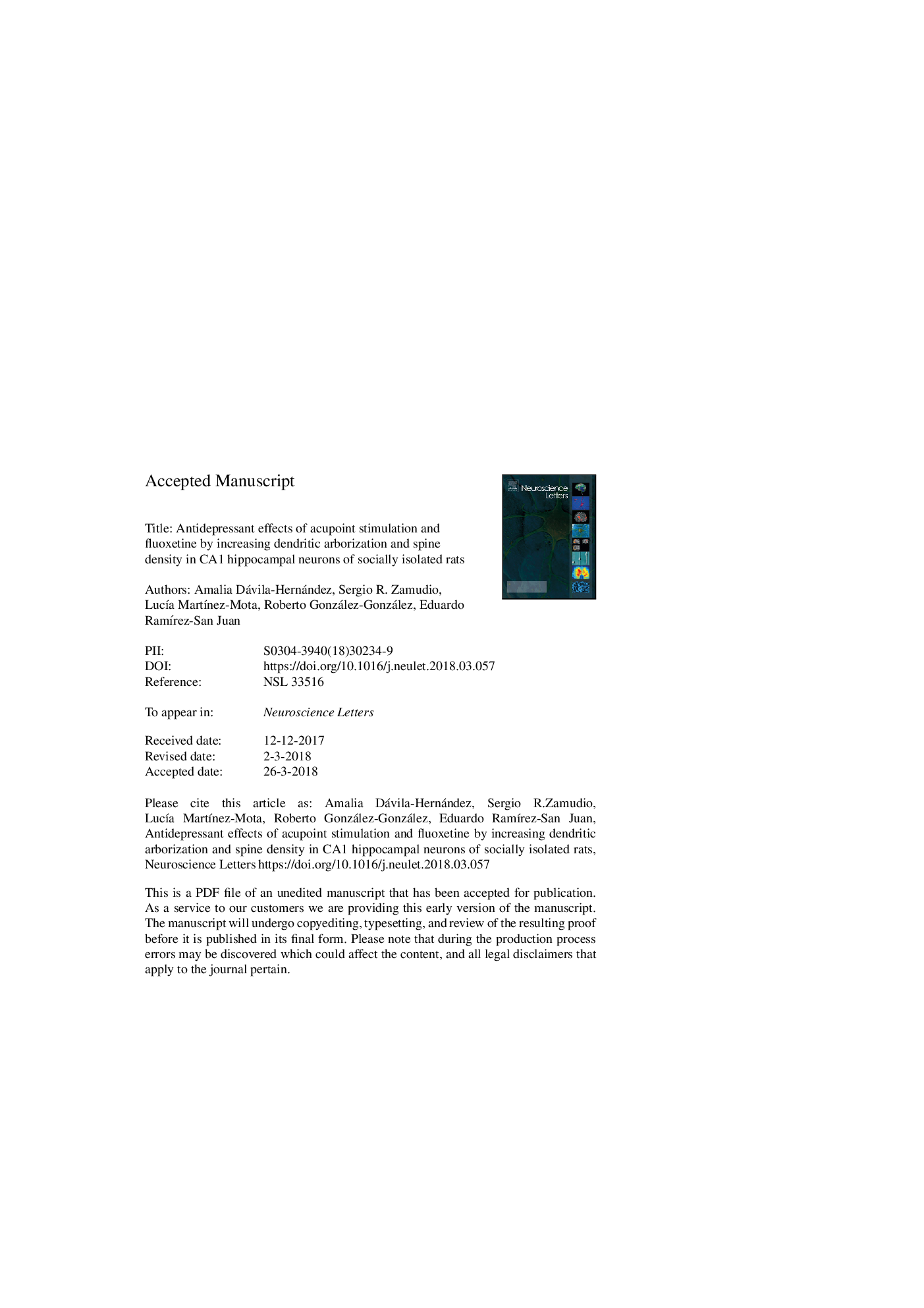| Article ID | Journal | Published Year | Pages | File Type |
|---|---|---|---|---|
| 8841529 | Neuroscience Letters | 2018 | 22 Pages |
Abstract
Given the importance of depression and the adverse effects of conventional treatment, it is necessary to seek complementary therapies. In a rat model of depression, this study aimed to assess the behavioral and morphological effects of embedding absorbable thread in acupoints (acu-catgut), and compare the results to those of fluoxetine treatment and the corresponding control groups. Therefore, depressive-like behavior was evaluated with the forced swimming test, and dendritic morphology (in the CA1 hippocampal region) with the Golgi-Cox technique and Sholl analysis. After weaning, male Sprague-Dawley rats were housed in social isolation for 8 weeks to induce depressive-like behavior. They were then given a 21-day treatment by stimulating acupoints with acu-catgut (AC) or fluoxetine (FX) (2â¯mg/kg). Rats were divided into six groups: Control (socially housed), social isolation (SI), SIâ¯+â¯AC, SIâ¯+â¯Sham (sham embedding of thread), SIâ¯+â¯FX and SIâ¯+â¯VH (vehicle). Compared to fluoxetine, acu-catgut treatment was more effective in reversing depressive-like behavior elicited by SI. The SI-induced reduction in dendritic length and spine density in hippocampal CA1 pyramidal neurons was attenuated after prolonged treatment with acu-catgut or fluoxetine. Hence, both treatments proved capable of reversing depressive-like alterations caused by SI, likely due to dendritic remodeling in the hippocampus.
Keywords
Related Topics
Life Sciences
Neuroscience
Neuroscience (General)
Authors
Amalia Dávila-Hernández, Sergio R. Zamudio, LucÃa MartÃnez-Mota, Roberto González-González, Eduardo RamÃrez-San Juan,
